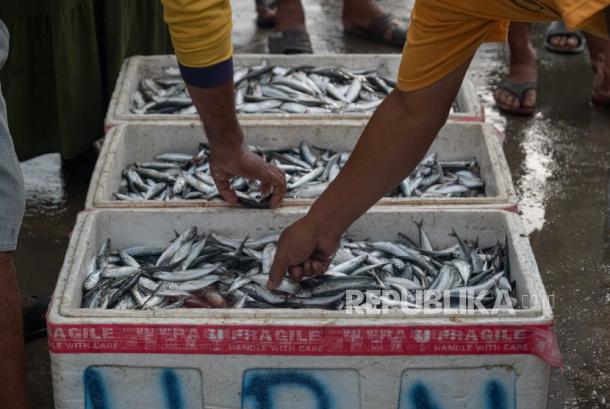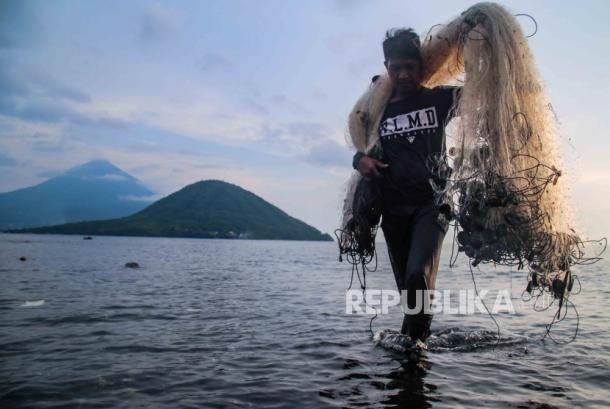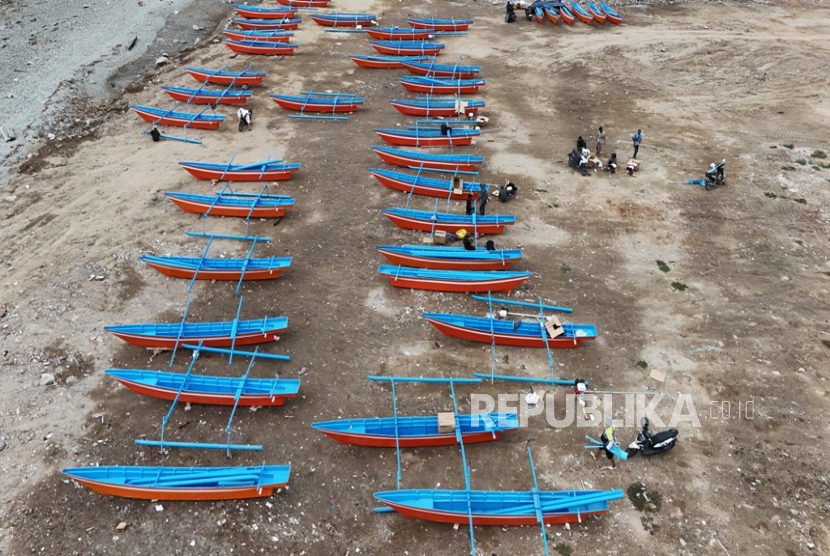BATAM -- Minister of National Development Planning (VAT) /Head of Bappenas Suharso Monoarfa stated that the road to blue economic development is still steep. There are many challenges to go through to run a blue economy.
“One of them is that residents living in coastal areas tend to be poorer (compared to noncoastal). In development goals, the fishermen's exchange rate often tries to be even higher. (In addition) social aspects, coastal and marine environments are often negatively affected by plastic waste,” Suharso said at the Indonesia Development Forum 2023 in Batam, Riau Islands, on Monday.
The poverty rate in coastal areas had a percentage of 11.02 percent, while noncoastal residents were 8.67 percent. Regarding the challenges of preserving Indonesia's aquatic ecosystem, there are estimated to be 12.87 million tons per year of plastic waste based on data from the Ministry of Environment and Forestry
Then, Ministry of Foreign Affairs data for 2020 listed 72 percent of untreated plastic waste as a result of lack of infrastructure and waste management. “Yesterday I witnessed with Mr. Governor (Riau Islands) when I went to Penyengat Island (Tanjungpinang City, Riau Islands) that plastic garbage if Mr. Governor said it was sent, it must be cleaned every day. It is conceivable what (the countermeasures) will look like. This is our great PR,” Suharso said.
The third challenge is that the contribution of maritime gross domestic product (GDP) is still relatively small, at 7 percent. In fact, Indonesia has such great potential.
Furthermore, climate change resulted in the disruption of marine ecosystems. Some of the effects of climate change are, among others, sea level rise that causes flooding of coastal areas and the sinking of various habitats on land, increased sea water temperatures that damage coral reefs, making seawater slightly acidic. The condition can damage shellfish, the algae become toxic, and negatively affect the fish in the sea.

Sea level rise today is called so rapid. In 2023, sea water levels rose by about 4 millimeters (mm), and rose by 100.5 mm in the last 20 years.
“On the north coast of Java, Demak, I met villagers who complained and blamed the construction of the motorway in Semarang, which they said was because even the flooding was unbearable. As a result, they have land certificates, but (the land) is already marine. It also happened in Pekalongan (Central Java) which was repeatedly overcome but could not,” he said.
Taking into account these challenges, it launched the second edition of Indonesia Blue Economy Roadmap 2023-2045 which was drawn up to develop a sustainable and inclusive blue economy.
The vision in the roadmap is how Indonesia can manage the sustainability of coastal and marine resources through a knowledge-based and research-backed economy. The goal is to create prosperity, ensure a healthy marine environment, and strengthen the resilience and importance of future generations.
The blue economic roadmap includes four main pillars. First, secure a healthy, resilient and productive ocean. Second, increase sustainable economic growth. Third, it improves health, well-being, and prosperity. Finally, create a supportive ecosystem habitat environment.
Targeted goals include increasing water conservation areas by 30 percent to 97.5 million hectares (ha) of total waters, doubling the contribution of maritime GDP from 7 percent to 15 percent, and promising employment of up to 12 percent.
As a complement to the roadmap, Bappenas also created the Indonesia Blue Economy Index (IBEI) to measure, monitor, and evaluate the development of the blue economy at the national and regional levels.

Bappenas said it is projected that the value added of the water-based economy or blue economy will reach 30 trillion US dollars by 2030. The strategic position of Indonesia's waters is the connecting link of international maritime traffic through the three waterways of the Indonesian archipelago.
He mentioned that Indonesia's marine areas have great blue economic potential, including Natuna, Malacca Strait, Cendrawasih Bay, Capalulu Strait, and a number of other locations.
To promote the blue economy, Bappenas established the Blue Economy Innovation Center in the Riau Islands as a platform for implementing an economic research and innovation center in Indonesia. Deputy Economic Affairs of the Ministry of PPN/Bappenas Amalia Adininggar Widyasanti said that this was done because Kepri became the blue economic hub of western Indonesia.
He said that the target in Indonesia's Blue Economic Roadmap, namely the contribution of maritime gross domestic product (GDP) to Indonesia's total GDP is expected to reach 15 percent. “That means it's up double from the current 7 percent one, then the second is the 30 percent marine protection area, the third the 12 percent labor absorption in the blue economic sector,” Amalia said.
He explained that Kepri also has some blue economic potential, such as maritime tourism, fish processing industry, shipbuilding industry, developing biotechnology, and offshore oil and gas.
According to Amalia, the blue economy is cross-sectoral in various sectors, among them the industrial sector, the oil and gas sector, the marine sector, the fishing sector, the environment sector, the trade sector, the transport sector, the research and innovation sector.


